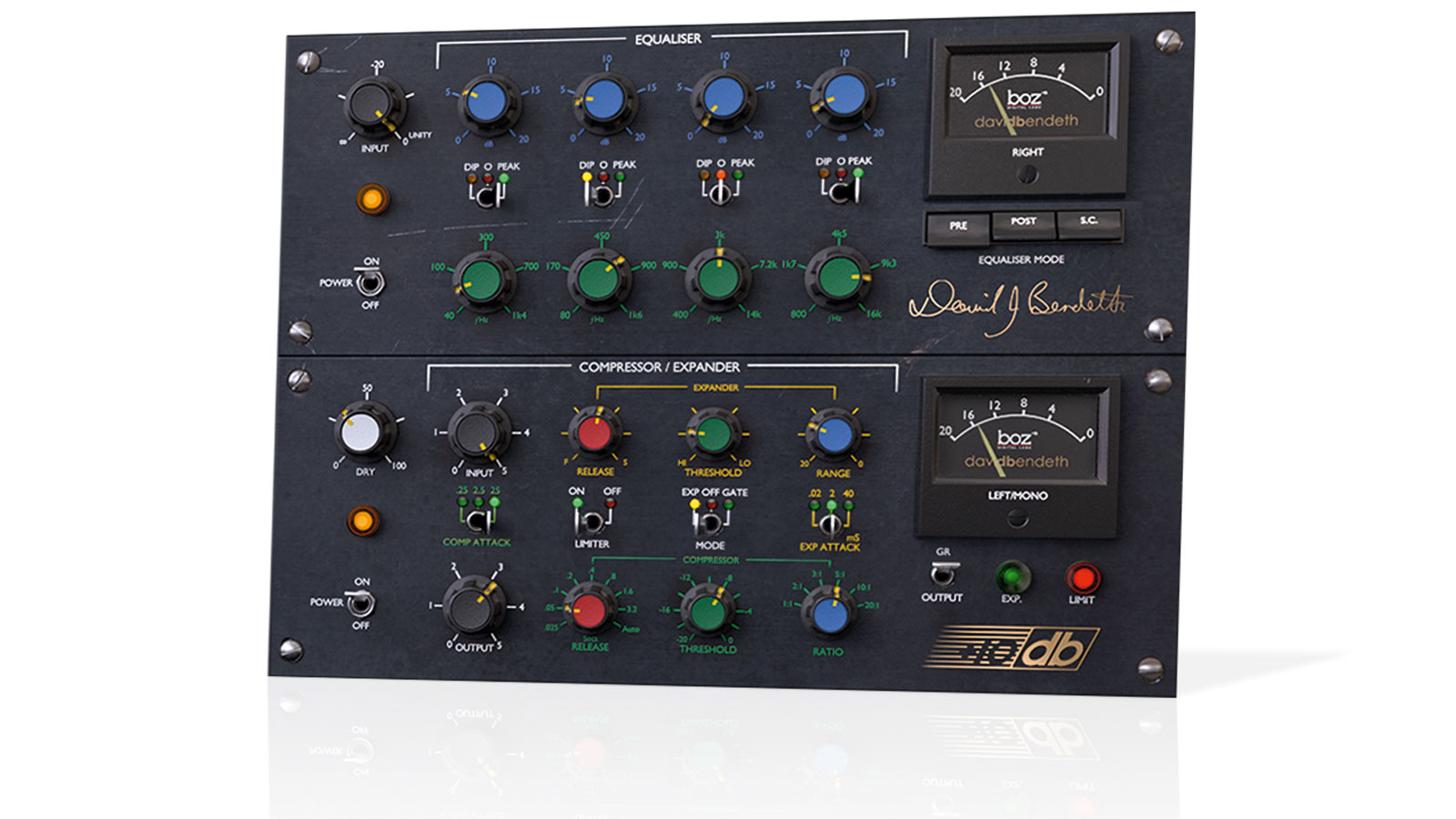MusicRadar Verdict
It's great to see such characterful hardware captured so effectively, even if that includes the frustrating aspects of the originals.
Pros
- +
Good emulation of a rare processor. Colourful compressor. Excellent expander/gate section. Useful EQ band interaction. Incl. individual EQ and dynamics plugins.
Cons
- -
Compressor can be tricky. Not the most flexible channel strip plugin.
MusicRadar's got your back
Californian developer Boz Digital Labs has collaborated with veteran producer/mixer David Bendeth for the creation of its +10dB series of plugins (VST/AU/RTAS/AAX), emulating the classic 70s Audio And Design Compex (compressor/limiter/expander) and Equaliser circuits. We're reviewing the +10dB Bundle, which combines compressor/limiter/expander and EQ in one unit.
The EQ is four-band, and all four bands are bell shaped. Switches select between attenuate (Dip), boost (Peak) or off (O) modes for each band, and there's up to +/-20dB of gain on tap.
"+10dB gives a fine recreation of the classic A&D sound, with its snappy compression, powerful peak EQs and responsive expander"
Frequencies are continuously sweepable, with considerable crossover between band ranges. The EQ can be positioned pre- or post- compressor/expander or fed into its sidechain.
The compressor controls comprise Threshold (0 to -20dB in 2dB increments), eight release settings (25ms to 3.2s) plus Auto, six ratios (1-20:1) and three Attack settings (0.25ms, 2.5ms and 25ms). There's also an optional hard Limiter.
The Expander section includes continuously variable Threshold, Release and Range (0 to -20dB) knobs, with three Attack speeds (0.02ms, 2ms and 40ms) and a Gate mode. Finally, internal levels are handled by the EQ Input and Compressor Input/Output knobs, and the Dry signal level is adjustable for parallel processing.
Crash, bang, wallop
+10dB's compressor section behaves in one of two very distinct ways, depending on the Ratio. The first three settings up to 3:1 have a soft knee behaviour, but switch to 5:1 and beyond and it becomes an aggressive, 'snap'-style processor that works particularly well on snares with the attack set to 2.5ms or 25ms.
In contrast, the fastest attack time nails pretty much every transient, and so needs to be approached with caution. With its fixed threshold, the Limiter only stops the highest internal peaks.
The expander delivers incredibly tight results, with its fastest attack potentially adding clicky attack to sounds, which can be useful at times. It's very easy to use, and emulation of the original hardware's hysteresis design helps with setting the threshold.
The EQ is an interesting beast, with its band frequency overlaps enabling more than 20dB of gain to be applied to certain ranges, and combinations of boost and cut at slightly different frequencies creating overshoot-style curves.
The Q widths are unusual, too: they're fixed and don't change with gain adjustments, but the upper and lower bands are narrower than the mid bands, making them better for more surgical changes.
Even at low gain levels, they do a great job of adding punch to kicks and crack to snares, reminding us of the classic API EQs. Caution is called for at higher gains, though, as they can feel horribly unnatural. The middle two bands are broader and, used with care, can add good bell-shaped sweetening.
The EQ-to-sidechain option can be used to trigger compression and expansion that's more or less sensitive to specific frequencies.
+10dB gives a fine recreation of the classic A&D sound, with its snappy compression, powerful peak EQs and responsive expander. Much like the hardware, though, it can be a bit fiddly for the novice engineer.
Computer Music magazine is the world’s best selling publication dedicated solely to making great music with your Mac or PC computer. Each issue it brings its lucky readers the best in cutting-edge tutorials, need-to-know, expert software reviews and even all the tools you actually need to make great music today, courtesy of our legendary CM Plugin Suite.
With its latest free update, Ableton has finally turned Note into the app I always wanted it to be
Technically capable, but struggle to make your tunes sound musical? 5 simple music theory hacks to make your tracks stand out
"Despite its size, it delivers impressive audio quality and premium functions as well as featuring a good selection of inspired sounds": Roland GO:Piano 88PX review











